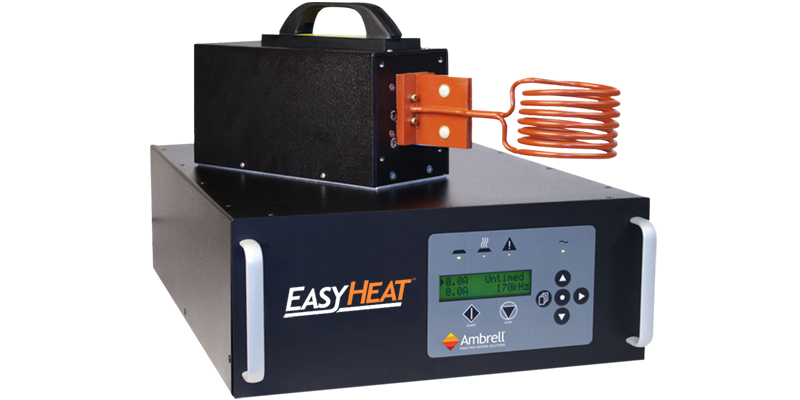Induction Brazing an Aluminum Assembly
Objective A company wanted to assess using induction heating for their aluminum assembly brazing process, and contacted THE LAB at Ambrell to utilize...
Applications
Applications: More
Applications: More

Industries:
Industries: More
Industries: More
Industries: More

Products:
Products: More
Services:
Services: More

Learn:
Learn: More
About:


A supplier of automotive parts needed to heat steel inserts to be placed into a plastic frame. They turned to THE LAB at Ambrell to see if they could prove out a solution that would heat their parts in a rapid and repeatable way to increase throughput and part quality.
More Staking Application Notes
A custom-designed multiple-turn helical coil was built to generate the required heating for this heating staking application. Initial tests were conducted to optimize the power delivered to the inserts. Samples heated to temperature in just over one second. An Ambrell EASYHEAT 6 kW induction heating system was used for the application and was set at a frequency of 360 kHz.
THE LAB at Ambrell proved the viability of this heat staking (metal-to-plastic insertion) application. Induction met their speed/throughput goals, which was critical given the high volume manufacturing process it would be part of. Additionally, the repeatability and reduced footprint were also important benefits to the client.
THE LAB at Ambrell has considerable experience with heat staking applications, which enabled them to deliver a solution that met the client's requirements. To learn more about free application testing, visit our page about THE LAB to get the process started.

Objective A company wanted to assess using induction heating for their aluminum assembly brazing process, and contacted THE LAB at Ambrell to utilize...

Induction heating is a process that uses electromagnetic fields to heat electrically conductive materials. It has been used in numerous industries...

Induction heating, a process that uses electromagnetic induction to heat electrically conductive materials, is often thought of for large industrial...